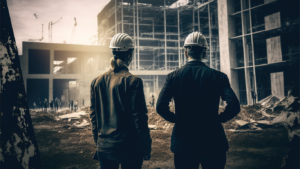A recent shortage in Arizona construction workers has spelt complications for the industry. According to a report put out by the Greater Phoenix Chamber Foundation (GPCF), there are over 10,000 vacancies in the Arizona construction industry as of 2016 and a subsequent Home Advisor survey (of the same year) found that the lack of laborers played a significant role in slowing or stopping the growth of 93 percent for Arizona construction industry companies that year.
Pre-fabrication construction methods may be part of a solution to solving the shortage. Because the problem is less about the number of available workers and more about the increasing amount of construction projects breaking ground, said Gretchen Kinsella, an executive project manager at DPR Construction.
Modular construction and prefabrication methods can help by cutting down on the number of laborers needed on an individual construction project.
Construction prefabrication is broadly defined as any assembled or constructed piece which has been constructed off-site as opposed to on-site, Kinsella said. This can range from electrical wirings to already assembled piping, but ultimately works to reduce the time spent on any project.
Modular construction takes the same concept a step further, essentially constructing entire rooms and “putting the building together like LEGO’s,” said Kinsella. “A lot of times, that is more conducive to repetitive structures that a company is going to be building over and over again.”
The practice may begin to play a larger and larger role in the Arizona as the industry adapts to help the smaller labor force meet construction demands, said Mark Minter, CEO of the Arizona Builders Alliance.
“We’re starting to see some modular construction on an experimental basis in our markets,” said Minter.
In more unionized states, such as New York, the power of modular construction can be more easily seen, said Minter, quoting an instance of an 18-story apartment building which was built in a month.
“We believe factory fabricated building components and modules are a solution for the future,” said Jen Hawkins of Digital Building Components, an Arizona-based pre-fabrication firm. “As the availability of skilled labor varies from location to location and becomes more scarce, the ability to fabricate in a plant environment with a consistent crew is a significant competitive advantage for builders.”
According to a 2011 McGraw-Hill Construction report, 66 percent of firms using these methods reported saving construction time in doing so – 35 percent of which reported shaving off four weeks or more off construction time.
“I feel very strongly that pre-fabrication has a place in every project,” said Kinsella. “It’s just a matter of finding the right kind of pre-fabrication for each project.”
But that application of pre-fabrication (and modular construction) is more complicated of a decision for construction teams than just a solution for under-staffed construction crews.
“It does help with the labor side of things but sometimes it also costs more money,” said Kinsella. This is because while construction firms can save money in time and labor costs, pre-fabrication not only inserts another link into the supply chain but now also introduces expensive shipping costs to move the parts, said Kinsella.
But shipping costs are only one factor impacting the cost of pre-fabrication, because pricing is also dependent on the amount contracted for each construction job.
“A lot of the time, when you use modularization, you don’t make a profit unless you make [at least] 100 of the same [components],” said Kinsella.
Modular construction is best suited for repeatable designs in construction sites, said Minter – health care facilities like hospitals, hotels, resorts and schools are just examples of some.
“We’re doing this in bits and pieces anyways,” said Minter. “And to some degree the skill sets we need on job sites are so hard to develop [or] are in such short supply, [that] we are just managing those, instead of off a job site, back in a factory where we don’t need that tradesman type skill set.”
These pre-fabricated parts tend to be specialized parts, according to Minter, like bent and formed sheet metal, plumbing rigs, electrical boards and circuits are examples of some.
Pre-fabrication also supports specified construction firms who can spend individual dedicated time to higher quality builds within their specialty, said Minter.
“We don’t bend sheet metal on job sites anymore,” he said. “Some third-party is actually doing it in a factory using numerically controlled machines.”
“We were in a tremendous shortage of craft laborers ten, twelve years ago, and as far as I know we got everything built,” said Minter. “We seem to be getting everything built [now].”
Minter was optimistic about the future of the Arizona construction industry, despite the mass vacancies in the industry. “We will figure out how to do it, one way or another,” he said.



